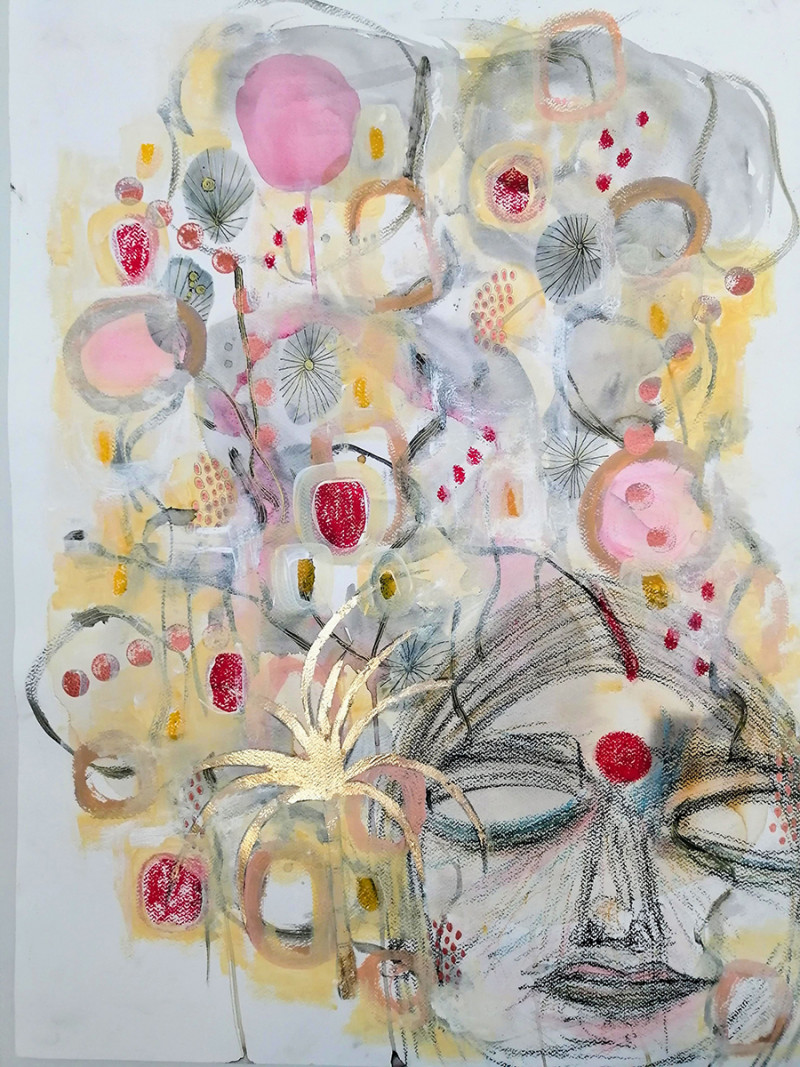
Detail of Making Peace with the Past by Seema Singh
A silenced voice speaks by Alessia Belsito-Riera
Long-silent stories are given voice through New Zealand Academy of Fine Arts exhibition Lives of the Girmit Women at the Academy Galleries from the 19th to the 26th of May. Led by Seema Singh and supported by Nirmala Balram and Sunita Narayan, this project is a tribute to the lives of the Indian women who were brought to Fiji under British rule during the Indian indenture system. The agreements binding people to labour for a set amount of time, known as a Girmit, sent 60,965 to Fiji. The conditions were atrocious, hardly better than those of the newly abolished slavery regime.
Lives of the Girmit Women includes artefacts, historical documents, journal extracts, photographs, poems, and paintings. I approached Singh to share her voice and story.
What inspired this exhibition?
I am a fourth-generation Indian born in Fiji and I had very limited knowledge about my own heritage, so I decided to change that. I wanted to connect the younger generation with their past and ancestors.
How did you go about doing that?
The research process was very intensive and quite emotional. I looked up past papers, read a book called My Twenty-one Years in the Fiji Islands by Totaram Sanadhya, read journal articles, viewed videos, and read information on websites. I also reached out to Girmit descendants. I talked to a lot of people about their family stories that their ancestors had shared with them. I started connecting with family members that I had not talked to for more than a decade. Despite the research process being quite intensive and overwhelming, it has been a very rewarding and educational journey.
Can you tell me about your artwork, which includes collage/multimedia and abstract portraiture?
My artwork is just a part of the exhibition. It shows different aspects of the Indian community in colonial Fiji during the Girmit period. I have used Fiji Hindi names for most of the artworks highlighting the uniqueness of the language. Only spoken by the Fiji Indian people, it’s an integral aspect of their identity.
Lots of materials and techniques have been used such as charcoal, pencil strokes, rough edges, torn paper, lots of glue, some cold wax as well. Some materials reference my heritage such as jute cloth, string, sindoor, and turmeric. A lot of the artworks have messy impressions, signifying the information overload that I encountered.
What do you hope visitors take away from the exhibition?
My aim is that people educate themselves about the Fiji Indians from the perspective of a Fiji Indian person and not from books written by colonists. The indenture system isn’t covered in the Fiji school curriculum and as a result a lot of the generations after me will not know about their ancestors. I want the young ones to come and learn about the journey of their ancestors and appreciate their sacrifices and contributions to Fiji’s progress today.
View more articles from:
« Issue 219, May 7, 2024

